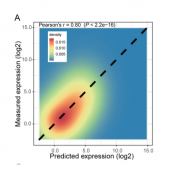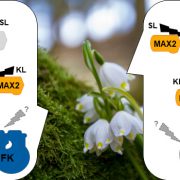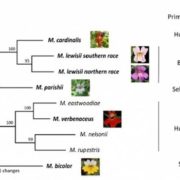Desiccation tolerance evolved through gene duplication and network rewiring in Lindernia (Plant Cell)
 Desiccation tolerance is the property of being able to survive and recover from extreme dehydration. Although there are many desiccation-tolerant plant species, efforts to identify the genetic basis of desiccation tolerance have been limited by a lack of closely-related desiccation sensitive species. VanBuren et al. compared two species of Lindernia, one of which is desiccation sensitive. The comparison of these closely aligned genomes reveals that some desiccation-tolerance genes such as those encodling LEAs (late-embryo abundant) and ELIPs (early light induced proteins) are substantially duplicated in L. brevidens, and there is a general rewiring of the transcriptional networks. The authors conclude, “Desiccation tolerance likely evolved from a complex, additive series of gene duplications and pathway rewiring rather than a simple master regulatory switch.” (Summary by Mary Williams) Plant Cell 10.1105/tpc.18.00517
Desiccation tolerance is the property of being able to survive and recover from extreme dehydration. Although there are many desiccation-tolerant plant species, efforts to identify the genetic basis of desiccation tolerance have been limited by a lack of closely-related desiccation sensitive species. VanBuren et al. compared two species of Lindernia, one of which is desiccation sensitive. The comparison of these closely aligned genomes reveals that some desiccation-tolerance genes such as those encodling LEAs (late-embryo abundant) and ELIPs (early light induced proteins) are substantially duplicated in L. brevidens, and there is a general rewiring of the transcriptional networks. The authors conclude, “Desiccation tolerance likely evolved from a complex, additive series of gene duplications and pathway rewiring rather than a simple master regulatory switch.” (Summary by Mary Williams) Plant Cell 10.1105/tpc.18.00517









